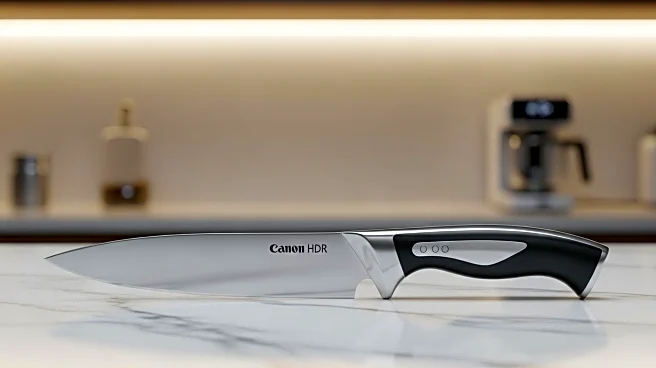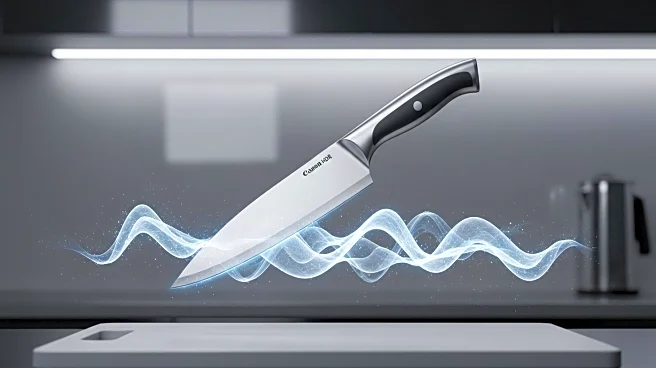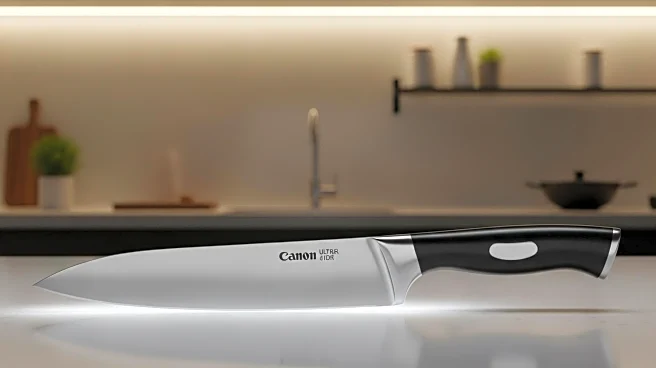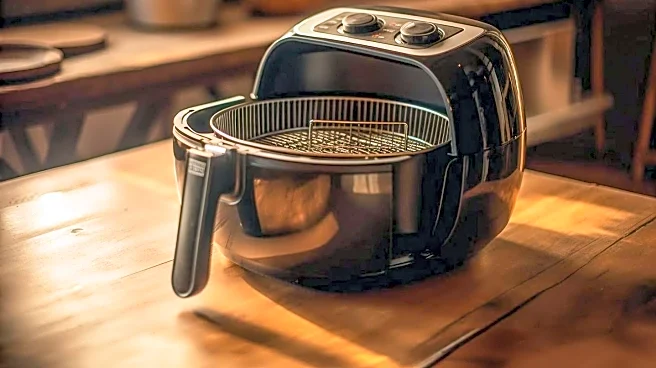What's Happening?
Seattle Ultrasonics has unveiled the C-200, the first ultrasonic chef's knife designed for home use. This innovative kitchen tool vibrates at over 40,000 times per second, significantly reducing the friction during cutting and requiring half the force compared to traditional knives. The C-200, priced at $399 in the U.S., is crafted from Japanese AUS-10 san mai stainless steel, ensuring durability and corrosion resistance. It features a cordless design with a removable battery pack that charges via USB-C. The knife's technology, originally used in industrial food processing, has been miniaturized for residential kitchens, promising to make food preparation easier and more precise.
Why It's Important?
The introduction of the C-200 ultrasonic chef's knife could revolutionize home cooking by making food preparation more efficient and less physically demanding. This is particularly beneficial for individuals with arthritis or limited mobility, as the knife requires less force to operate. The technology's adaptation from industrial to home use represents a significant advancement in kitchen tools, potentially setting a new standard for culinary equipment. The knife's ability to produce cleaner cuts with less effort could appeal to both amateur cooks and professional chefs, enhancing the overall cooking experience.
What's Next?
Preorders for the C-200 are currently open, with deliveries expected in January 2026. As the knife becomes available, it will undergo real-world testing to evaluate its performance and practicality in everyday kitchen settings. The market response to this high-tech kitchen tool will likely influence future developments in culinary technology, potentially leading to more innovations that bridge the gap between professional and home cooking tools.
Beyond the Headlines
The C-200's development highlights the growing trend of integrating advanced technology into everyday household items. This shift not only enhances functionality but also raises questions about the accessibility and affordability of such innovations. As more high-tech tools enter the consumer market, there may be broader implications for the culinary industry, including changes in cooking techniques and the potential for new culinary trends driven by technology.










